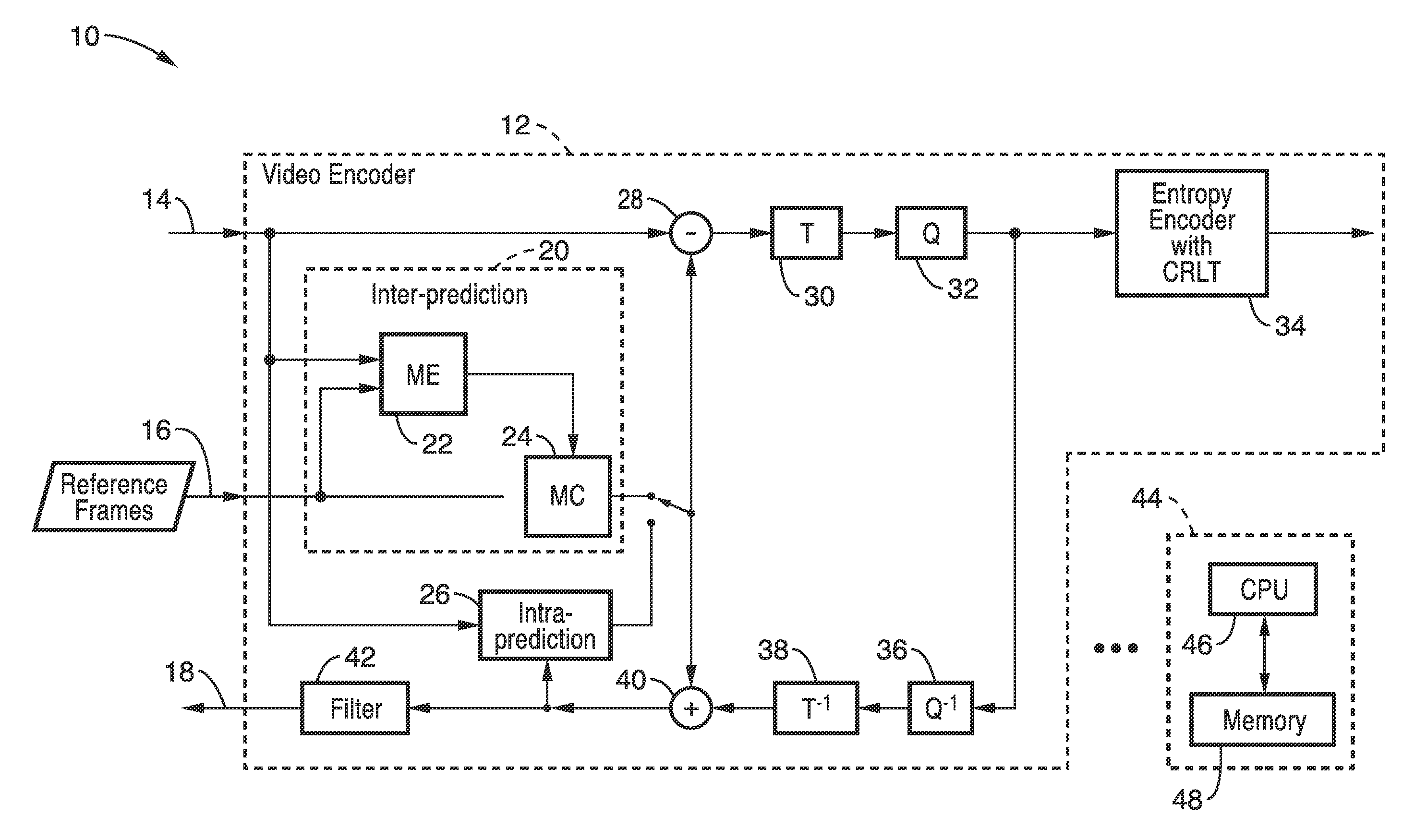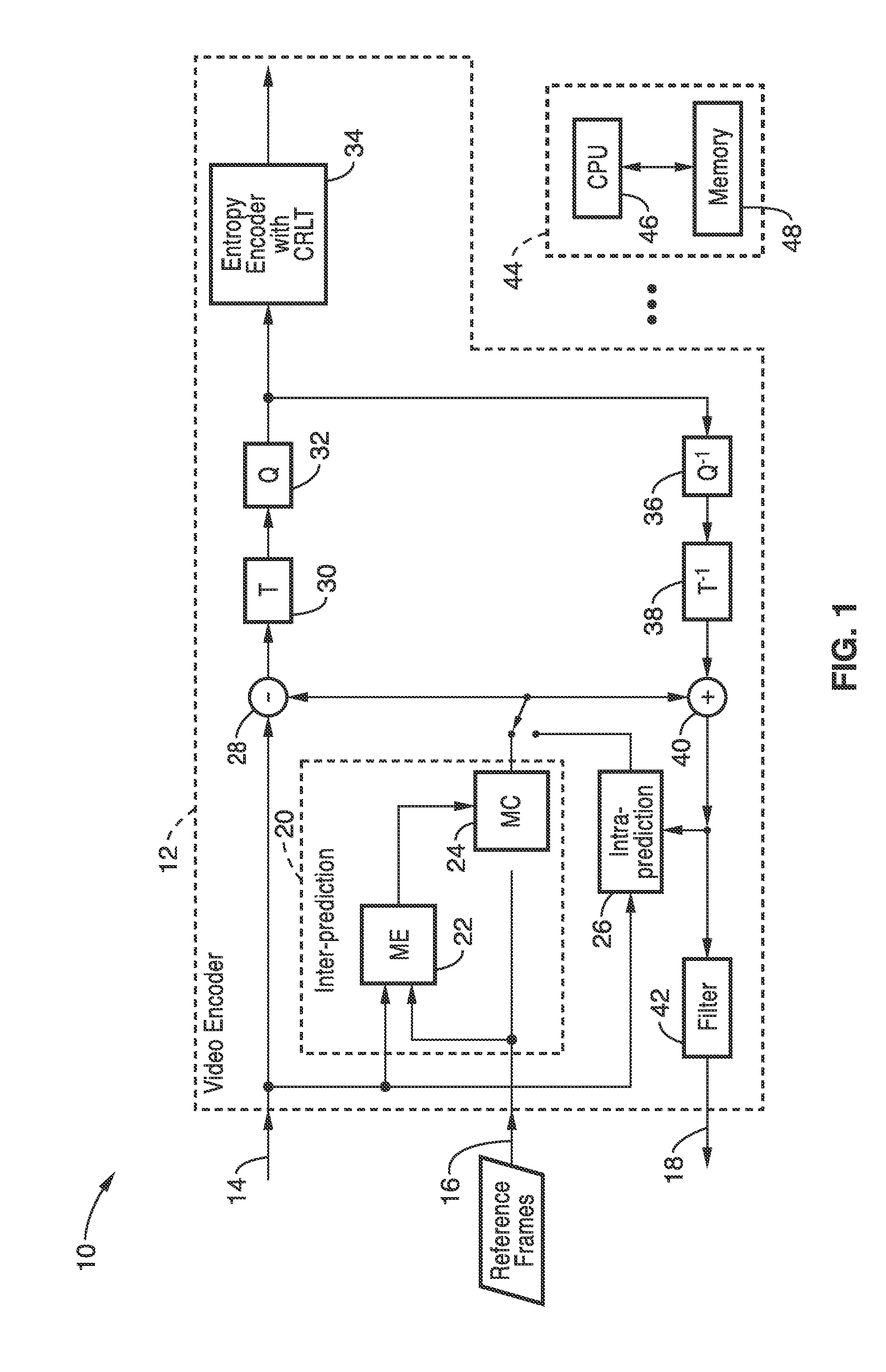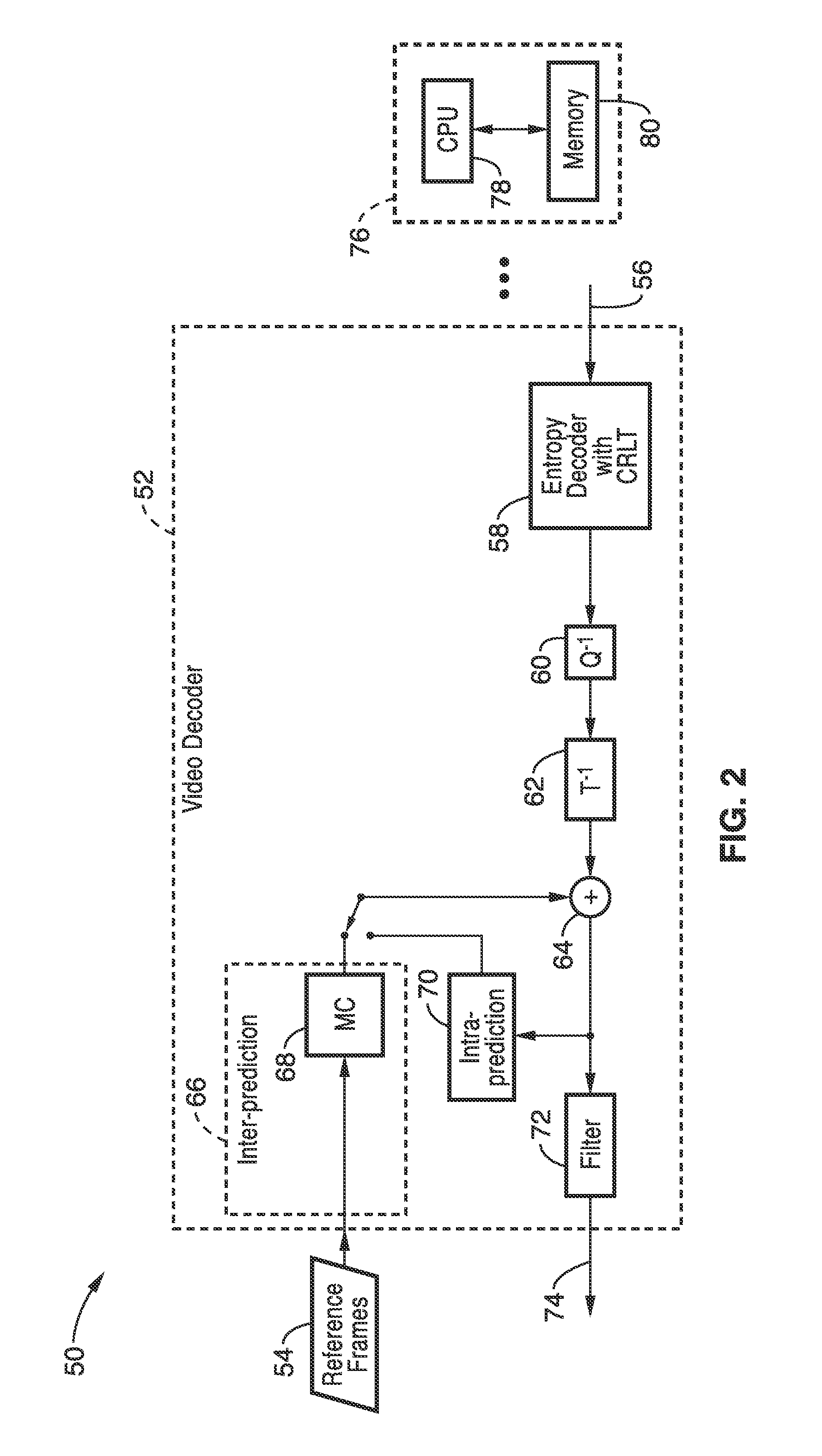Context reduction for last transform position coding
a technology of position reduction and context reduction, applied in the field of video coding, can solve the problems of increasing processing overhead and significant levels of processing power for cabac decoding, and achieve the effect of reducing the number of contexts and enhanced parallel entropy encoding
- Summary
- Abstract
- Description
- Claims
- Application Information
AI Technical Summary
Benefits of technology
Problems solved by technology
Method used
Image
Examples
embodiment 1
[0041]2. The apparatus of embodiment 1, wherein all bins of the block width except a first three bins share a context model with at least one other bin.
[0042]3. The apparatus of embodiment 1, wherein said assigning of context models comprises removing context models 4, 6, 8, 10, and 15, or a subset thereof for significance maps having a block width less than 32.
embodiment 3
[0043]4. The apparatus of embodiment 3, further comprising programming configured for execution on said computer for additionally removing context model 11 for block widths of 16.
[0044]5. The apparatus of embodiment 1, wherein said assigning of context models comprises re-assigning the context models 3, 5, 7, 9, 11, 12, 13, 14 for use on other bins, or a subset thereof for significance maps having a block width less than 32.
[0045]6. The apparatus of embodiment 1, wherein said entropy encoding comprises context adaptive binary arithmetic coding (CABAC).
[0046]7. The apparatus of embodiment 1, wherein said encoding of the position of the last significant coefficient comprises explicitly encoding said position of the last coefficient by signaling its X and Y coordinates with a binary or unary code, with X and Y coordinates signaled independently.
[0047]8. The apparatus of embodiment 1, wherein said encoding comprises high efficiency video coding (HEVC).
[0048]9. The apparatus of embodimen...
embodiment 10
[0050]11. The apparatus of embodiment 10, wherein said assigning of context models comprises removing context models 4, 6, 8, 10, and 15, or a subset thereof for significance maps having block widths less than 32.
PUM
 Login to View More
Login to View More Abstract
Description
Claims
Application Information
 Login to View More
Login to View More - R&D
- Intellectual Property
- Life Sciences
- Materials
- Tech Scout
- Unparalleled Data Quality
- Higher Quality Content
- 60% Fewer Hallucinations
Browse by: Latest US Patents, China's latest patents, Technical Efficacy Thesaurus, Application Domain, Technology Topic, Popular Technical Reports.
© 2025 PatSnap. All rights reserved.Legal|Privacy policy|Modern Slavery Act Transparency Statement|Sitemap|About US| Contact US: help@patsnap.com



